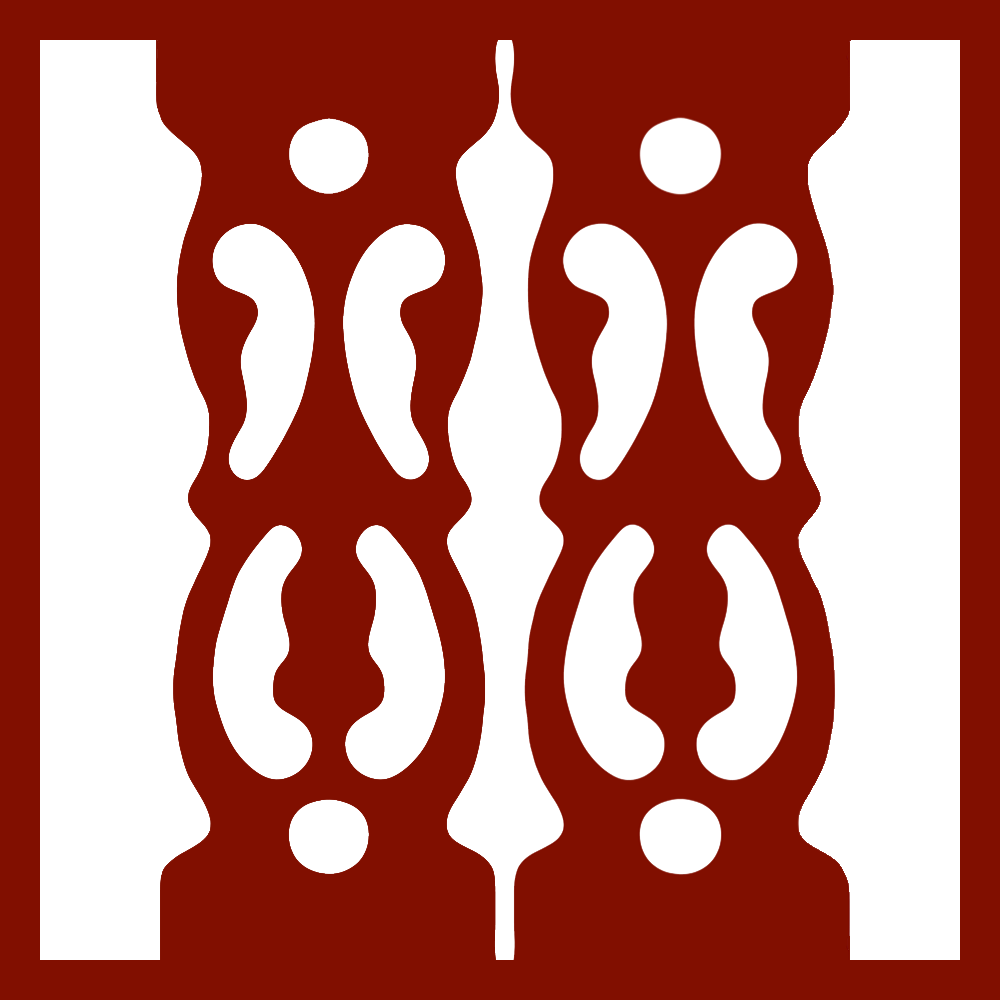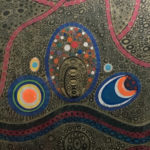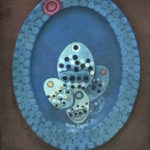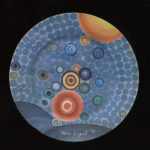Nena Saguil was born in Manila, 1914, d, Paris, February 1994. A pioneering Philippine modern artist remembered as a feminist, a mystic and a recluse, Saguil studied art at the University of the Philippines School of Fine Arts and was awarded a certificate in painting in 1933.
In 1954, at the age of forty, a Walter Damrosch Scholarship allowed Saguil to move to Spain, where she studied abstract painting. Another scholarship, from the Instituto de Cultura Hispania allowed her to further her studies. In 1956 Saguil moved to Paris to study at the Ecole des Artes Americane.
The following year Saguil had a solo show at Galerie Raymond Creuze in Paris, where she exhibited works with linear and geometric elements. She later experimented with a syringe technique similar to that of Fernando Zobel and Lee Aguinaldo, painting delicate loops and spatters on softly brushed grounds.
Saguil paintings of the 1950s include Cubist renditions of traditional Philippine subject matter, such as rice planting, as well as more rebellious Surrealist works. Nena Saguils mature abstract works are often described as cosmos and many contain spheres, fibers, dots, vortices and bubbles. Her imagery has also been characterized as cellular, and some of her forms appear as if seen through a microscope.
By the end of her career she had taken part in exhibitions in Germany, Italy, England, Switzerland, Sweden, Turkey, and the United States.
After her death in 1994 Saguil was the subject of a September 1995 memorial exhibition at the Lopez Museum which was followed by a major exhibit at the Cultural Center of the Philippines in 1997, and in 2006, Philippine President Arroyo posthumously awarded Saguil a Presidential Medal of Merit.
-
COSMIC PEACE SERIES
27 1/2″x 21″
Mixed Media – pen and ink; watercolor
1972
-
SOLD
Oil
1971
-
SOLD
Oil
1970
-
SOLD
BLEU SER BLEU
14″L x 14″W
Oil
1975




